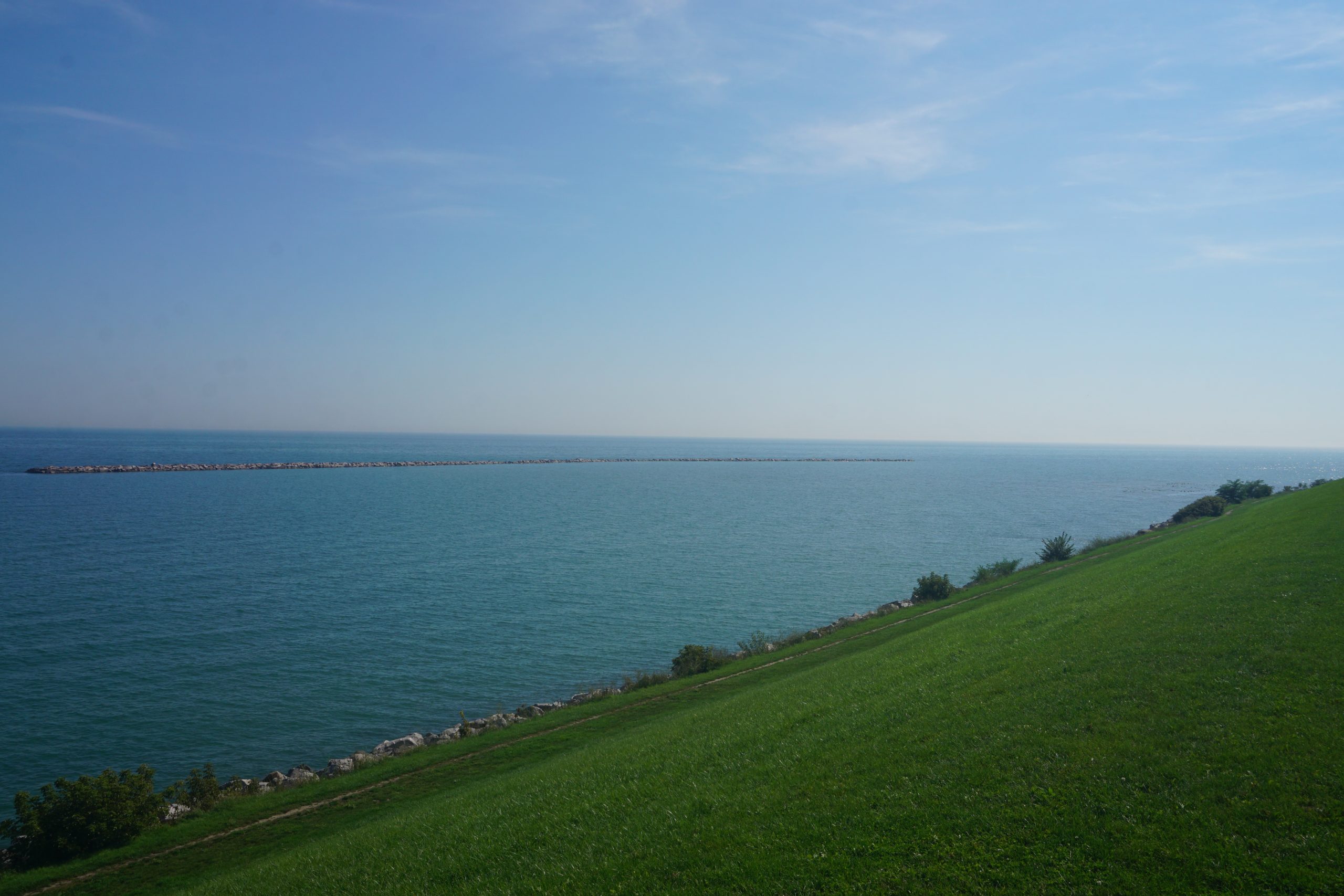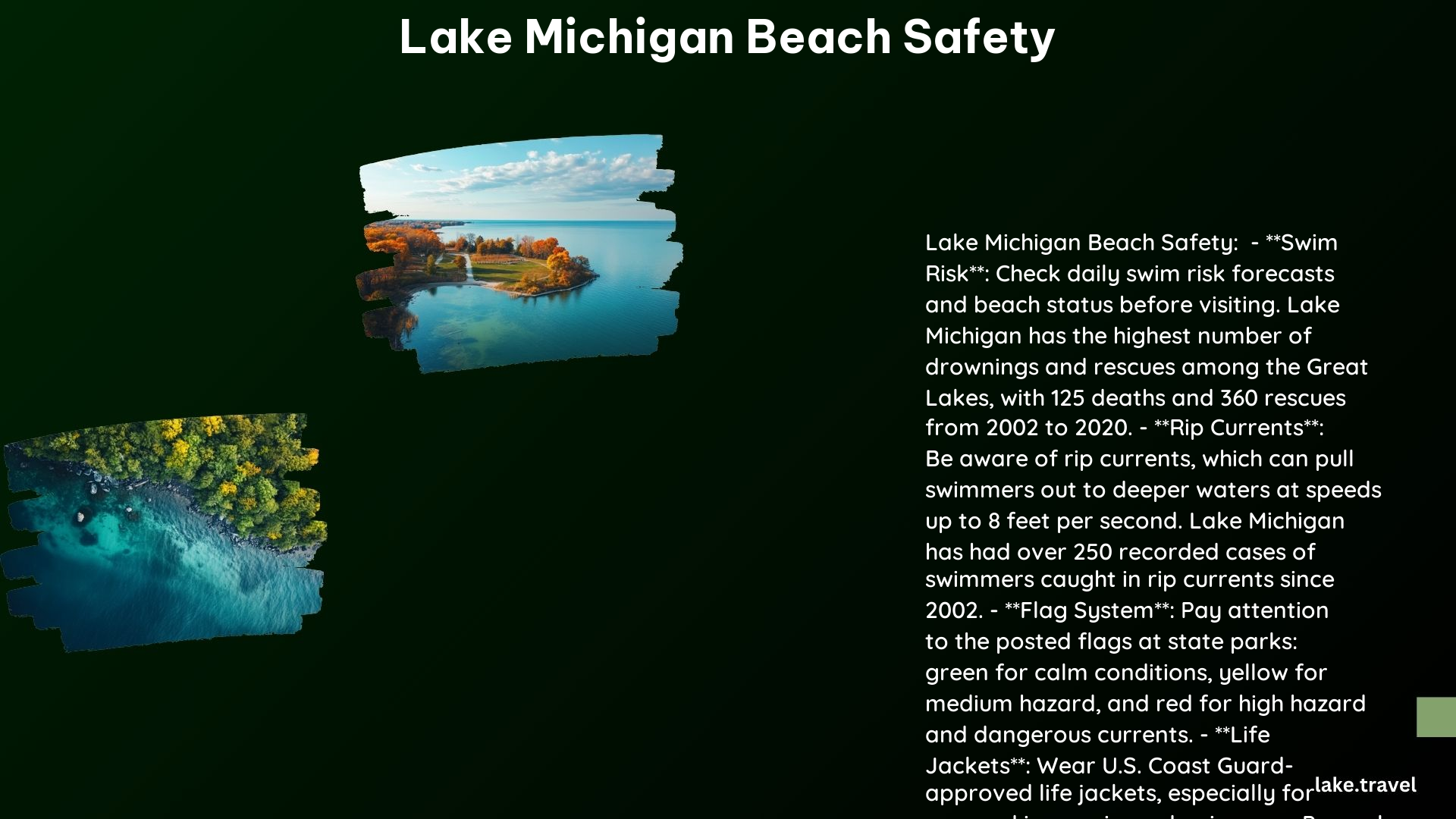Lake Michigan, one of the Great Lakes, is known for its stunning beauty and abundant recreational opportunities, but it also poses significant hazards for swimmers. Understanding these risks and taking necessary precautions is crucial for a safe and enjoyable experience at Lake Michigan beaches.
Common Hazards at Lake Michigan Beaches

- Rip Currents: Lake Michigan is particularly prone to rip currents, which are strong, localized currents that can pull swimmers away from the shore at speeds up to eight feet per second. These currents are often difficult to spot and can occur without warning.
- Structural Currents: Currents can form around structures such as piers and breakwalls, creating hazardous conditions for swimmers.
- High Waves: Lake Michigan is known for its high waves, which can be dangerous for swimmers, especially during strong winds or storms.
- Water Contamination: The lake can become contaminated with harmful bacteria, leading to health risks for swimmers.
- Cold Water: Lake Michigan’s water temperature can be cold, especially in the spring and early summer, which can cause hypothermia or other cold-related illnesses.
Safety Measures and Precautions

- Swim with a Buddy: Never swim alone, and always keep a close watch over children.
- Life Jackets: Wear U.S. Coast Guard-approved life jackets, especially for new and inexperienced swimmers.
- Check the Swim Risk: Before visiting a beach, check the swim risk and beach status using resources such as the National Weather Service’s Great Lakes Beach Hazards page.
- Watch for Flags: Pay attention to the flag warning system at state parks, which indicates the safety conditions for swimming.
- Avoid Swimming During Hazardous Conditions: Avoid swimming during strong winds, thunderstorms, or when there are hazardous waves or currents present.
- Designate a Water Watcher: Have someone dedicated to watching the water for swimmers, especially if there are no lifeguards present.
- Learn How to Spot a Rip Current: Educate yourself on how to identify rip currents and what to do if you get caught in one.
Additional Tips and Resources
- Check Local Weather Reports: Stay informed about weather conditions and lake forecasts before and during your beach trip.
- Use Lifesaving Devices: If someone is in trouble, throw a lifesaving device or anything else that floats, and call 911 immediately.
- Visit Life Jacket Loaner Stations: Some state parks along Lake Michigan have life jacket loaner stations available.
- Learn the “Flip, Float, and Follow” Technique: This technique can help you survive if you get caught in a rip current.
Statistics and Incidents
- Drowning Statistics: Lake Michigan has the highest number of drownings among the Great Lakes, with 125 deaths and 360 rescues from 2002 to 2020.
- Rip Current Incidents: There have been over 250 recorded cases of swimmers caught in rip currents on Lake Michigan since 2002.
References
- Michigan.gov. (n.d.). Great Lakes Water Safety. Retrieved from https://www.michigan.gov/dnr/education/safety-info/beach-safety
- National Park Service. (2024). Beach Safety. Retrieved from https://www.nps.gov/indu/planyourvisit/beach-safety.htm
- National Weather Service. (n.d.). Great Lakes Beach Hazards. Retrieved from https://www.weather.gov/greatlakes/beachhazards
- National Weather Service. (n.d.). Swimming Safely on the Great Lakes. Retrieved from https://www.weather.gov/mkx/SwimmingSafelyOnTheGreatLakes
- South Bend Tribune. (2024). A Guide to How to Swim Safely in Lake Michigan. Retrieved from https://www.southbendtribune.com/story/news/local/2024/07/03/a-guide-to-how-to-swim-safely-in-lake-michigan/74207238007/.
